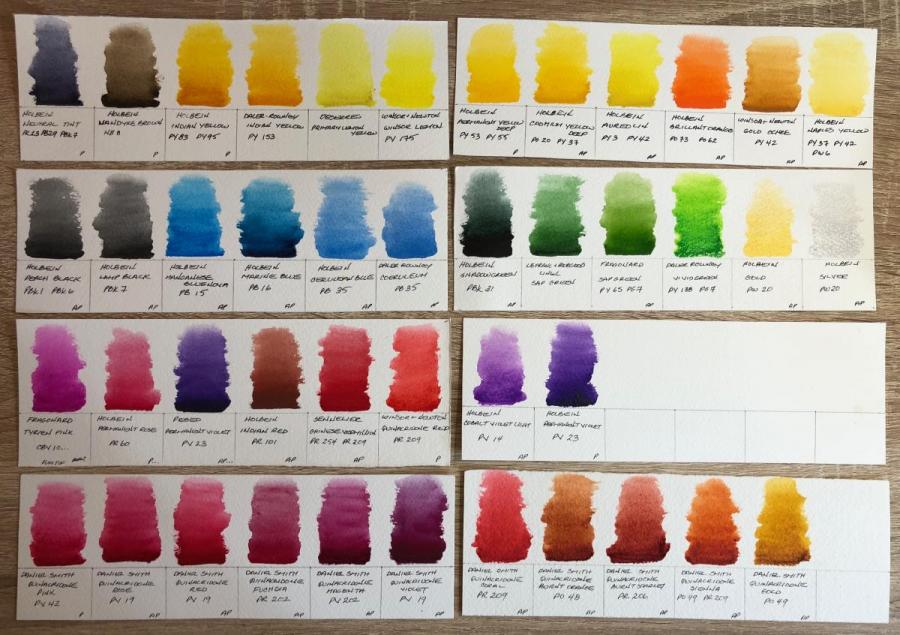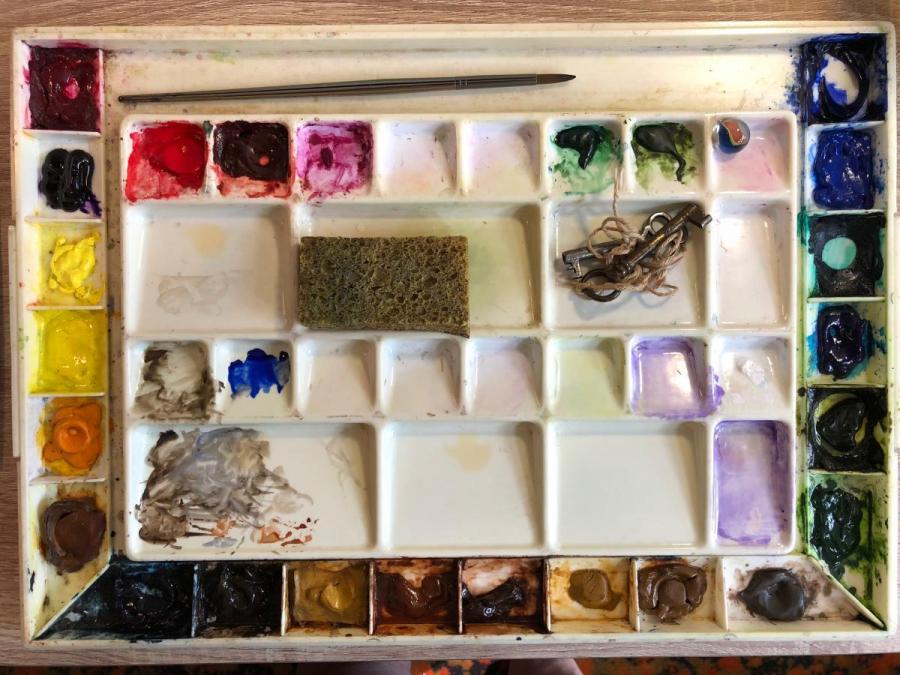(CLICK ON THE IMAGE BELOW TO READ THE WHOLE ARTICLE)
I wanted to take advantage of an online sale yesterday so I first did an inventory of my paint box. I decided to spend some time making swatches of all the tubes of colour that are no longer in my current work pallet, or that never made it there in the first place!
Although every painter tends to use more or less the same handful of colours, our personal "pallet", from time to time different accent coulors are needed. However since the basic pallet should (and mine does) contain the three primary colours almost any colour can be mixed.
My pallet has 25 colours in it at the moment, which is more than enough. Only 10 or so of them get regular use. So why were there 45 other colours in my box and why, along with replenishing the stocks of my favourite colours, did I order a new colour?
First off, buying art supplies is the ultimate retail therapy for a painter and it takes no more than a mention from a friend or an art magazine article to have me running to my computer to order a tube or two of new colours. Opening a tube of colour, dipping my brush and spreading the first stroke on a scrap of paper always gives a bit of a thrill! Playing with the colour to see how easily it lifts, how it spreads on wet paper... Mixing the new colour with existing ones to discover new potential recipes... Eventually imagining new subjects to paint using the new shade... Whether or not I ever use the new hue is perhaps irrevelant. The whole process of experimenting with a new colour is, in itself, stimulating to my creative self!
It is also quite revealing to compare the same "colour" made by different manufacturers. Several different companies produce colours bearing the same name but often different pigments are used to make them. Take for example "Indian Yellow".
Holbein Indian Yellow is made with PY83 and PY95 (PY is "pigment yellow" and PO is "pigment orange")
Daler Rowney Indian Yellow is made with PY153
Winsor and Newton Indian Yellow is made with PO62 and PY139 (in my current work pallet)
Each of these pigments is, of course, a different colour but they also have different properties concerning lightfastness, staining, transparency, etc. and cause the paint to perform differently. It is often a good idea to try brands to find the one that is most suited to one's style of work and colour preferences!
It must have been easier in the "good old days" when Indian Yellow was obtained from the dried urine of cows fed exclusively on a diet of mango leaves...

